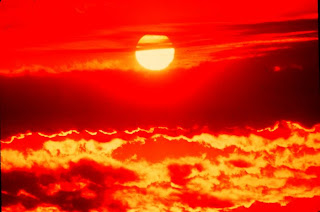BAD Causes of Nuclear War
Countless Death
Example: Within the first two to four months of the bombings of Hiroshima & Nagasaki, the acute effects killed 90,000–166,000 people in Hiroshima and 60,000–80,000 in Nagasaki, with roughly half of the deaths in each city occurring on the first day. The Hiroshima prefectural health department estimates that, of the people who died on the day of the explosion, 60% died from flash or flame burns, 30% from falling debris and 10% from other causes
FATAL INJURED -Keloids-
After the burns and wounds of those injured by the A-bomb had once seemed to be healed, the scars became thick and produced growths known as Keloids. The keloids were seen in 50-60% of those exposed to thermal heat rays within 2 km from the hypocenter. Keloids are said to be associated with radiation. Keloids left permanent scars on the victims' mind and bodies. Those with keloids on their faces more suffered mentally and those with keloids on their backs and shoulders hesitated to show their skin. A lot of people in Hiroshima were seen wearing long-sleeve shirts even in the summer.
 |
| A woman with keloids on her back and arms (October, photographed by the U. S. Armed Forces) |
 |
| Sadako Sasaki (above) and the note she wrote down her blood count in her sickbed. |
SICKNESS -Leukemia-
Leukemia is a malignancy of hematopoietic (blood-forming) cells, in which leukocytes greatly increase, causing loss of their normal functions and weaken immunity to infectious diseases. Although those who were not exposed to A-bomb can develop leukemia, the incidence of leukemia in Hiroshima and Nagasaki was found to be significantly high among those who had been closely exposed at a young age, and leukemia became to be widely recognized as a aftereffect caused by radiation.
Leukemia incidences peaked during the 1950's and was considered a typical atomic bomb disease and gave hibakusha a strong anxiety. Sadako Sasaki, a student of Noborimachi junior high school, suddenly developed leukemia and died at the age of 12 in the Hiroshima Red Cross Hospital on October 25, 1955. Her classmates erected a monument called the "Children's Peace Monument" for her and for all children who died as a result of the A-bomb.
SICKNESS -Prenatal Exposure-
In 1946, women who were exposed to radiation close to the hypocenter during pregnancy gave birth to babies with small heads. It was found as they grew up that most of them had severe mental retardation. This condition is termed "microcephaly." These disabilities happened when foetuses were exposed to radiation at a gestational age of 8-25 weeks (especially 8-15 weeks) because at this stage, the fetal cells are particularly sensitive to radiation. Those foetuses that were exposed to radiation within 2 km from the hypocenter and were born before May 31, 1946 are estimated to be 1,100.
SICKNESS -Cancer (malignant tumors)-
While occurrence of leukemia decreased during the 1960's, other tumors, such as thyroid cancer, breast cancer, lung cancer and salivary gland tumors began to occur among A-bomb survivors. It is a fact that radiation is one of the significant factors of inducing cancers, and the incidence of some cancers have a causal relationship to the distance from hypocenter and the radiation dose to which the survivor was exposed. Among the cancers which were confirmed to be related to radiation, there are some kinds which began to increase during 1955 to 1965 such as thyroid cancer, and there are other kinds which began to be remarkable only recently, such as colon cancer and myeloma. It is considered that the younger the age of the survivor at the time of exposure, the greater the risk of cancer.
SICKNESS -A-bomb Caused Cataracts-
Cataracts show symptoms of clouding of the lens and poor eyesight. They were identified for the first time in the autumn of 1948 in Hiroshima, and in June of 1949 in Nagasaki. Radiation-caused cataracts are different from those resulting from old age. The occurrence of atomic bomb cataracts and the degree of clouding of the lens are causally related to the radiation dose. It is considered that the closer the survivor was exposed to the A-bomb, the greater the risk of cataract.
[Genetic effect] People have been anxious about the possibility of the genetic effects of radiation. Various research and studies have been conducted from different viewpoints by specialists, but any harmful effects on descendants of hibakusha have not been founded so far.
References: http://www.chugoku-np.co.jp/abom/97e/peace/e/06/bakugeki.htm























